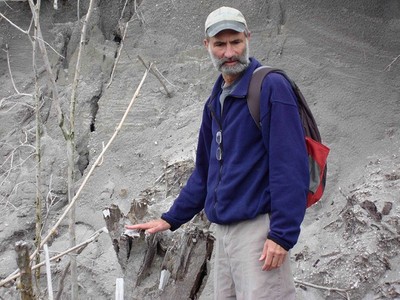Dublin Core
Title
Fred Swanson - 2013 Oral History Interview on the H.J. Andrews Experimental Forest (Part 3 of 3)
Description
Fred Swanson spent his career as a Forest Service earth scientist studying the geology-ecology interface mainly in the Andrews Forest and, also, serving in leadership positions, including as Principal Investigator of the Long-Term Ecological Research (LTER) project. Swanson gives an extended description of his upbringing in Delaware and Virginia and then undergraduate work at Penn State, a year of work for US Geological Survey on the West coast, followed by a PhD in Geology at University of Oregon. Throughout this history he was exposed to the natural world via family travels, academic field experiences, and in other ways which encouraged a love of the wild natural world, especially in the West, and a deep appreciation of taking an interdisciplinary approach to engagement with the natural world – both geological and ecological.
In this interview, the third of three, Swanson begins with a reflection on how so many leaders within the Andrews Forest program have been leaders in their own science fields and also very able to connect the findings with land management and policy, which has been fostered by connections between the research community and the National Forest. Swanson amplifies on the point by describing the work and communications concerning old-growth forests and the Forest Ecosystem Management Assessment Team process leading to the NWFP and the many interactions with the public and policy makers, especially on field tours.
Additional topics of the session include Adaptive Management Areas under the NWFP, the troika of OSU, Willamette National Forest, and Pacific Northwest Research Station in managing the Andrews program, the mix of cultures involved in the Forest Wars disputes, development and management of the Andrews Forest headquarters facilities, the scope of the LTER network, the major science infrastructure in the Andrews Forest (e.g., the reference stand system, long-term experiments, and installations, such as Dick Iverson’s experimental debris flow flume), and engagement of the arts and humanities in the Andrews Forest program. He continues by discussing the great importance, impacts, and responsibilities of the LTER program, including its international dimensions. Swanson closes the interview by describing what future steps he would like to see the program take and also expressing his gratitude for having the chance to spend his career associated with the Andrews Forest.
In this interview, the third of three, Swanson begins with a reflection on how so many leaders within the Andrews Forest program have been leaders in their own science fields and also very able to connect the findings with land management and policy, which has been fostered by connections between the research community and the National Forest. Swanson amplifies on the point by describing the work and communications concerning old-growth forests and the Forest Ecosystem Management Assessment Team process leading to the NWFP and the many interactions with the public and policy makers, especially on field tours.
Additional topics of the session include Adaptive Management Areas under the NWFP, the troika of OSU, Willamette National Forest, and Pacific Northwest Research Station in managing the Andrews program, the mix of cultures involved in the Forest Wars disputes, development and management of the Andrews Forest headquarters facilities, the scope of the LTER network, the major science infrastructure in the Andrews Forest (e.g., the reference stand system, long-term experiments, and installations, such as Dick Iverson’s experimental debris flow flume), and engagement of the arts and humanities in the Andrews Forest program. He continues by discussing the great importance, impacts, and responsibilities of the LTER program, including its international dimensions. Swanson closes the interview by describing what future steps he would like to see the program take and also expressing his gratitude for having the chance to spend his career associated with the Andrews Forest.
Creator
Fred Swanson
Source
H.J. Andrews Experimental Forest Oral History Collection (OH 28)
Publisher
Special Collections and Archives Research Center, Oregon State University Libraries
Date
November 26, 2013
Contributor
Samuel Schmieding
Format
Born Digital Audio
Language
English
Type
Oral History
Identifier
oh28-swanson-fred-20131126
Oral History Item Type Metadata
Interviewer
Samuel Schmieding
Interviewee
Fred Swanson
Location
Swanson residence, Corvallis, Oregon
Original Format
Born Digital Audio
Duration
2:07:28
OHMS Object
Interview Format
audio
